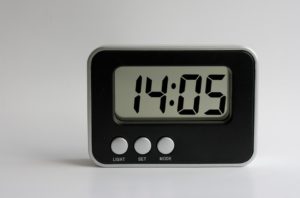
When most people think of display technologies, they envision liquid-crystal display (LCD) and organic light-emitting diode (OLED). After all, countless display devices feature these display technologies. There are other display technologies, though, one of which is vacuum fluorescent display (VFD).
Overview of VFD Technology
VFD is a display technology that leverages cathodoluminescence. It’s commonly used in small consumer electronics, such as alarm clocks, automotive radios and microwaves. VFDs are electronic displays that feature a series of tubes. Within each of these tubes is a phosphor-covered anode. When turned on, a cathode will blast electrons through these tubes, thus illuminating the pixels while subsequently creating visual images.
Advantages of VFDs
VFDs offer several advantages. They are typically brighter than other types of displays, for instance. As the cathode blasts a VFD’s tubes with electrons, it will produce bright light. Because they are so bright, VFDs are ideal for use in dark or otherwise low-light conditions. This is why many alarm clocks use VFD technology.
In addition to being bright, VFDs offer a high contrast. They can produce a wide range of bright and light colors with strong contrast. The type of phosphor compounds used in a VFD will determine the colors that it can produce. Nonetheless, all VFDs offer a high contrast. Most VFDs can be dimmed. You can make them brighter or darker to achieve a comfortable viewing experience.
VFDs can be incorporated into touchscreens, specifically capacitive touchscreens. Capacitive touchscreens require the use of a conductive top layer. Certain types of VFDs feature a conductive screen, so they can be used in capacitive touchscreens.
Disadvantages of VFDs
VFDs, on the other hand, typically have a shorter lifespan than other types of displays. Some of them may only last for 2,000 hours, whereas others may last for 20,000 hours. Of course, that’s a substantially shorter lifespan than other types of displays. LCDs can last for well over 60,000.
Power consumption is another disadvantage of VFDs. All displays consume power — and VFDs are no exception. VFDs, however, tend to consume more power than other types of displays. If you’re looking for an energy-efficient display, you may want to choose an LCD. LCDs are far more energy efficient than VFDs.
In Conclusion
There are other display technologies besides LCD and OLED. VFD is an alternative display technology that leverages cathodoluminescence. It’s similar to cathode ray tube (CRT), but VFD features a different construction consisting of phosphor-covered anodes in tubes.
